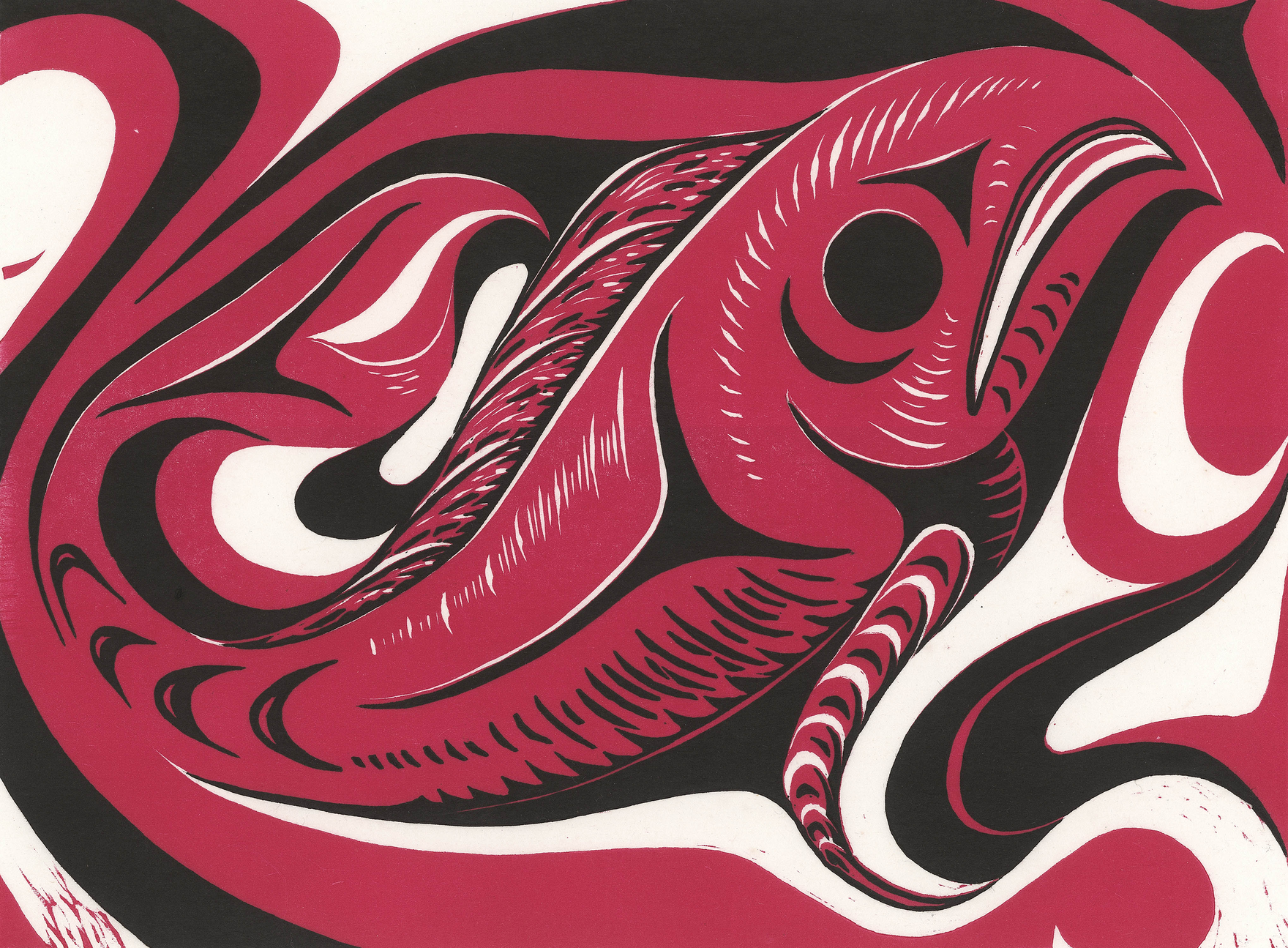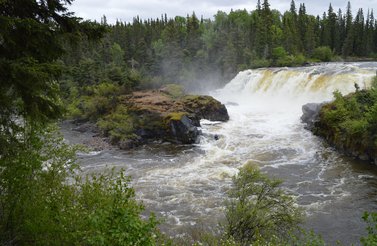On November 28, 2018, I testified in front of the National Energy Board (NEB) in continued opposition to the Trans Mountain pipeline expansion project (TMX), alongside a handful of others from the Tsawout First Nation — one of five Bands that comprise the W̱SÁNEĆ, an Indigenous nation located near (what is now) Victoria, British Columbia. We opened with drumming and a prayer song about the 13 W̱SÁNEĆ moons; a song that ties us to the lands, waters and more-than-human world in our homelands. The W̱SÁNEĆ year is divided into 13 moons that represent not calendar months but social, cultural, economic and spiritual practices that correspond with the weather and cycle of seasons. As a Salt Water People, much of our traditional homelands span the southern Gulf Islands (Canadian side) and the San Juan Islands (American side).
In the February 2019 reconsideration of the TMX, the NEB once again decided that the expansion project is in the public interest of Canadians, despite acknowledging that it will cause “significant adverse environmental effects” on the marine environment and Indigenous cultural uses. The TMX would see the total capacity of the pipeline increase from 300,000 to 890,000 barrels of crude oil per day, as well as a seven-fold increase in tanker traffic along the coast of British Columbia. Ultimately, the NEB offered 16 new recommendations aimed at marine protection while concluding that any risks associated with the project are outweighed by the “considerable benefits” that the project offers.
Indigenous peoples have been standing in front of Canadian institutions such as the NEB for decades, often with very little success in creating what we would call meaningful change.
As signatories to the Douglas Treaties, we also emphasized our governance structures and established treaty rights to “carry on our fisheries as formerly.” As such, we presented concerns relating to the significant harm that would be caused by an oil spill, as well as the damage caused by increased tanker traffic, including continued erosion, damage to eel grass beds and harm to endangered species such as the southern resident killer whales. The marine shipping route taken by the tankers also impacts the majority of our reef net fishing sites. As Nick Claxton, my cousin and an assistant professor at the University of Victoria, testified: “Overall, this project runs counter to our efforts as W̱SÁNEĆ people, our efforts to regain and revitalize our ways of being and living, our ways of life that were developed and stood for a millennia, the many gifts that were given to us by the creator, XALS, such as the SXOLE, and these things were promised to be respected through our treaty relationship, which are still being ignored and pushed aside by the settler colonial state.”
As a community, Tsawout raised concerns about specific harms relating to the project that we hoped would help sway the NEB away from granting approval for the expansion. However, for Tsawout there was something larger at stake as well. I based my own testimony on presenting the challenges we faced from the perspective of W̱SÁNEĆ law, as I understand it. Opening with a prayer song was an important part of that; a prayer is meant to shape the way we relate to each other, to open hearts and minds, and to honour and respect the relationships that are all around us. I invited the NEB panel to listen with an open heart and open mind because to us, consultation requires not just hearing but understanding our laws, including their standards of judgment, the obligations they create, the worldview from which they flow, and their relevance and legitimacy on these lands.
Indigenous peoples have been standing in front of Canadian institutions such as the NEB for decades, often with very little success in creating what we would call meaningful change. The reason we do this, and will continue to do it, is because we are obligated to act, and speaking to these institutions is one of the ways in which we do so. We act in other ways as well, and we are aware of the limitations, the dangers and the misinterpretations that can occur through these processes, but we feel obligated to do so when necessary. W̱SÁNEĆ law requires that we act to protect our homelands and other beings within them, including islands, salmon, whales, water and others. This is a positive obligation within our law. In W̱SÁNEĆ, our laws and beliefs are intimately connected. In fact, in the W̱SÁNEĆ language (SENĆOŦEN), the word “SKÁLS” means both “laws” and “beliefs.” As with any law, how we see the world and envision ourselves within it directly structures our standards of judgment
In W̱SÁNEĆ, we have creation stories — which are often tied to specific places and SENĆOŦEN place names — for the land and beings within W̱SÁNEĆ territory, most of whom we view as our relatives or ancestors, or whom we are connected to through our different cultural societies. It is through W̱SÁNEĆ law that we have honoured and maintained these relationships for thousands of years. The SENĆOŦEN word for islands, “ṮEṮÁĆES,” is a helpful example; it translates as “Relatives of the Deep.”
The etymology of the word “ṮEṮÁĆES” reflects our creation story for islands. During the time of creation, the Creator, XÁLS, was walking through our homelands, transforming people and animals. In creating the islands, XÁLS took a number of W̱SÁNEĆ ancestors and threw them out into the ocean, creating the islands there today, each with unique characteristics. In W̱SÁNEĆ, we do not name islands after “significant people” or seek to objectify or impose ourselves over an island. Rather, we name islands based on their characteristics or our relationships to them. For example, James Island (named after Sir James Douglas), which is right next to the Tsawout reserve, is called ȽEL,TOS. ȽEL,TOS means “splashed on the face,” a fitting name because the southeast side of the island is worn by the wind and the tide as it flows through Cordova Channel.
After throwing the ancestors into the ocean, XÁLS turned to the islands and said, “You will look after the W̱SÁNEĆ people.” He then turned to the W̱SÁNEĆ and said, “You, too, will look after your Relatives of the Deep.” The islands have provided a way of life for W̱SÁNEĆ for thousands of years, and the law creates a reciprocal relationship of care between W̱SÁNEĆ and ṮEṮÁĆES. This responsibility is absolute; we are obligated to care for these islands, not only through our own actions but by protecting the islands against harmful actions by others. Seeing the islands as relatives informs our understanding and enactment of W̱SÁNEĆ law. Our worldview structures our standards of judgment and our decision-making processes. Speaking at the NEB was an enactment of our laws.
We are obligated to care for these islands, not only through our own actions but by protecting the islands against harmful actions by others.
Similar points can be made regarding the way W̱SÁNEĆ see water. SȽEMEW̱ (Grandfather Rain) was the first W̱SÁNEĆ man who came to the earth in the form of rain and helped form the world. He helped carve the lakes and rivers — without water, there is no life. In SENĆOŦEN, we use the word “KO” for water. However, during ceremony, when we are bathing and cleansing ourselves in cold water while offering prayer, we refer to water as “SȽEMEW̱” to honour our creation story and the relationship it speaks to. Again, this orientation structures our law and standards of judgment; it is why we see water as sacred and as needing to be protected and kept pure from harm to maintain its cleansing properties.
At the time of the NEB hearing, I was teaching an intensive field course in W̱SÁNEĆ law in a first-of-its-kind joint degree program in Indigenous and non-Indigenous law at the University of Victoria. The field course had students out on the land and working in the community, embodying the relationships W̱SÁNEĆ law speaks to. On the first day of class, we went together into the cold water by Tsawout and heard about Grandfather Rain. We visited the islands that tankers cruise past on a daily basis and spoke of those islands as relatives. As I related in my testimony to the NEB, these students are the lawyers of the future. The path forward necessitates a deeper and more meaningful understanding of Indigenous legal traditions.
In W̱SÁNEĆ, we will continue to resist and to emphasize the legitimacy and importance of our SKÁLS (laws and beliefs). However, we also need more people to listen and act. My late grandfather recalled words his father spoke to him while visiting a river in W̱SÁNEĆ. He said that “the river is a living thing, and if you listen, he will speak to you.” In the same way, a southern resident killer whale named J35, who carried the body of her dead calf for 17 days, was telling us something. For those who were listening, she was telling us that we have responsibilities we are not meeting. There are signs all around us that we need to stop recklessly burning through fossil fuels, depleting salmon stocks and carrying out other destructive behaviours. These are the larger issues that are at stake, and the fundamental changes that have to be made.
The notion of silo thinking is foreign in W̱SÁNEĆ law, and this type of short-sightedness is very dangerous in Canadian law. W̱SÁNEĆ law foregrounds a place-based ontology, and recognizes the places I speak of here are also embedded within the web of global climate change. Although Tsawout attempted to insert W̱SÁNEĆ law into the NEB process (because that was the path available), this is not a long-term solution. From a W̱SÁNEĆ perspective, the NEB cannot (on multiple grounds) provide a meaningful and just determination of the issues at hand, particularly when divorced from any type of intimate relationship with the lands, water and other beings over which it claims to preside. At most, the NEB process seeks to speak of the islands, the water and the whales, whereas a meaningful relationship with these beings is required. It is time for a different way of being, and that includes all of us.1
About the artist: Kelly Cannell is a Coast Salish artist born to the Musqueam First Nation in Vancouver, British Columbia, Canada. Kelly has been exposed to the arts and culture of the Coast Salish People since birth. At a very young age, Kelly began to pursue her career in art through her passion for Mother Nature and all of its creations. Other inspiration comes from Kelly’s travels throughout the world and engaging in new cultures.

